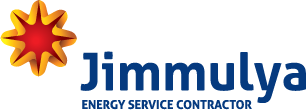The offshore oil and gas industry has witnessed remarkable transformations over the decades, driven by relentless technological advancements and innovative breakthroughs. These developments have not only increased the efficiency and safety of offshore drilling operations but also expanded the horizons of exploration and production into deeper waters and more challenging environments.
This article delves into the history of innovations in offshore oil and gas rigs, highlighting key milestones, advancements, and their significant impacts on the industry.
Early Beginnings: The Birth of Offshore Drilling
The journey of offshore drilling began in the late 19th century. The first offshore oil well was drilled in 1896 off the coast of Summerland, California, using piers extending from the shore. This marked the dawn of offshore exploration, though it was limited by the technology of the time.
In 1947, Kerr-McGee made a significant breakthrough by drilling the first truly offshore well out of sight of land in the Gulf of Mexico. This pioneering effort laid the foundation for future offshore oil and gas exploration and set the stage for subsequent innovations.
The Rise of Fixed Platforms
In the 1950s and 1960s, fixed platforms became the industry standard for offshore drilling. Constructed of steel and concrete, these platforms were anchored to the seabed, enabling drilling in waters up to 400 feet deep. The stability and durability of fixed platforms allowed for more extensive and reliable offshore operations.
Key Innovation: Fixed Platforms
– Advantages: Stability, ability to withstand harsh weather conditions.
– Impact: Expanded offshore drilling capabilities and set the groundwork for deeper water exploration.
The Advent of Floating Rigs
The limitations of fixed platforms led to the development of floating rigs, such as semi-submersibles and drillships, in the 1960s and 1970s. These rigs, not anchored to the seabed, offered greater flexibility and could operate in deeper waters, thus opening new frontiers for offshore drilling.
Key Innovation: Floating Rigs
– Advantages: Mobility, ability to drill in deeper waters.
– Impact: Enabled exploration in regions like the North Sea and deep waters of the Gulf of Mexico.
The Era of Deepwater and Ultra-Deepwater Drilling
Technological advancements in the 1980s and 1990s propelled the industry into deepwater and ultra-deepwater drilling. Innovations such as dynamic positioning systems, advanced blowout preventers, and subsea production systems revolutionized offshore operations, allowing drilling in waters deeper than 5,000 feet.
Key Innovation: Deepwater and Ultra-Deepwater Drilling
– Advantages: Access to previously unreachable oil reserves.
– Impact: Major discoveries in the Gulf of Mexico, Brazil, and West Africa.
Recent Innovations: Automation and Digitalization
In the 21st century, the offshore oil and gas industry has embraced automation and digitalization. Innovations such as automated drilling systems, digital twins, and real-time data analytics have significantly enhanced the efficiency, safety, and environmental sustainability of offshore operations.
Key Innovation: Automation and Digitalization
– Advantages: Increased precision, reduced human error, enhanced safety.
– Impact: Streamlined operations, predictive maintenance, and improved decision-making.
Chart: Innovations in Offshore Oil and Gas Rigs (1896-2020)

Chart Explanation: This chart illustrates the depth capabilities of offshore drilling rigs over time, highlighting significant innovations and their impact on the industry. Key milestones include the introduction of fixed platforms, the development of floating rigs, and the adoption of advanced technologies such as automated drilling systems and digital twins.
Significant Events and Their Impact
1. 1896 – First offshore oil well: Initiated offshore exploration.
2. 1947 – First out-of-sight-of-land offshore well: Marked a major milestone in offshore drilling.
3. 1950 – Introduction of fixed platforms: Enabled stable offshore operations in deeper waters.
4. 1960s-1970s – Development of floating rigs: Expanded exploration capabilities.
5. 1980s-1990s – Deepwater drilling advancements: Opened ultra-deepwater reserves.
6. 2000s-2010s – Automation and digitalization: Enhanced efficiency and safety.
Conclusion
The history of offshore oil and gas rigs is a testament to human ingenuity and the relentless pursuit of technological advancement. From the early days of offshore drilling to the modern era of automation and digitalization, each innovation has pushed the boundaries of what is possible, enabling the industry to meet the world’s energy needs more efficiently and sustainably.
As the industry continues to evolve, ongoing innovation will be crucial in addressing the challenges of deeper waters, harsher environments, and the growing demand for cleaner energy. The offshore oil and gas sector will undoubtedly continue to transform, driven by the same spirit of innovation that has defined its history.
At PT Jimmulya, we are committed to staying at the forefront of these advancements, leveraging the latest technologies to provide superior manpower services in the offshore oil and gas sector. As we look to the future, our dedication to innovation and excellence remains unwavering.
References
1. Offshore Technology. (2023). Evolution of Offshore Drilling. Retrieved from [Offshore Technology](https://www.offshore-technology.com).
2. Oil and Gas Journal. (2023). Innovations in Deepwater Drilling. Retrieved from [Oil and Gas Journal](https://www.ogj.com).
3. World Oil. (2023). The Future of Automation in Offshore Rigs. Retrieved from [World Oil](https://www.worldoil.com).
#OffshoreDrilling #OilAndGas #Innovation #History #DeepwaterDrilling #Automation #Digitalization #EnergySector #OffshoreRigs


Hai, ini merupakan sebuah komentar.
Untuk mulai memoderasi, mengedit, dan menghapus komentar, silakan kunjungi layar Komentar di dasbor.
Avatar komentator diambil dari Gravatar.